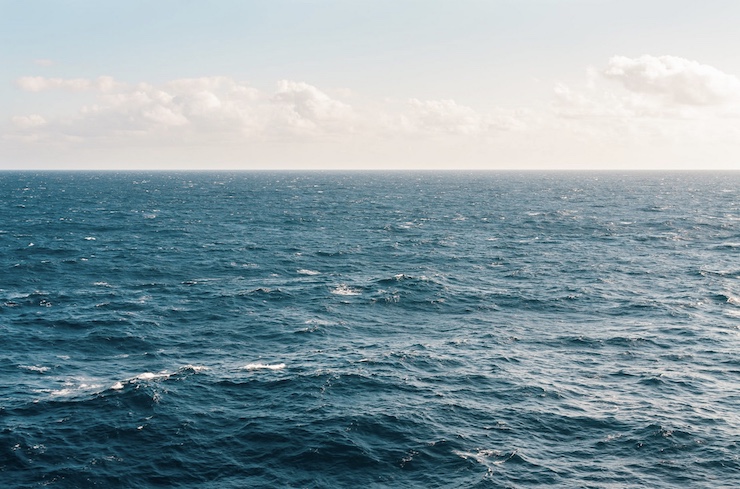
How much do we really know about the dynamics of the world’s vast oceans? Very little, according to Sebastien de Helleux, a French computer scientist and explorer who has pioneered the use of wind drones – or unmanned surface vehicles (USV) – to study the ocean’s uncharted depths. In a TED talk delivered last year, Helleux noted that there exist few sources of comprehensive data on the bodies of water that comprise 70% of the Earth’s surface. The National Oceanic and Atmospheric Association, or NOAA, the federal agency charged with monitoring the oceans and their effects on weather patterns, especially, has just 16 ships and no more than 200 stationary buoys in place worldwide to carry out its mission, while another vital source of data, satellite transmissions, barely penetrate below the oceans’ surface and offer only grainy imagery and incomplete data.
Helleux came up with his wind drone concept during a vacation sailing trip in the Pacific Ocean. ”We know more about life on other planets than we do about our own,” he says in his TED talk. He began working with engineers to design an entire fleet of wind drones – modeled on the design of wind-powered racing yachts – that could roam the world’s oceans collecting underwater data and relay it to orbiting satellites that process and model the findings for further analysis. One of his first pilot projects was to analyze the movements of the walleye pollock and fur seals in the Bering Strait to try to understand why stocks of the fish – a key food source used in fish sticks – were becoming dangerously depleted.
Halleux’s drones tracked the movements of the pollock for over a year while a counterpart marine research group that had attached GPS tags to the fur seals monitored the pattern of their seals dives. The answer soon became clear: Due to warming waters, the pollock were being pushed further north into colder waters where they were more susceptible to becoming preyed upon by fur seals. At the same time, surviving pollock had become drawn too far away from their home water to tend to their spawn leaving a higher percentage to die. As a result of these combined pressures, the numbers of pollock in the Bering Strait were fast declining.
It was a simple test project but it illustrated how simple wind drones could fill the gap in current oceanographic research to address key problems relating to climate change and sustainability. Halleux’s company, Sail Drone, Inc. has gone on to partner with NOAA to study the inside workings of hurricanes as viewed from the ocean’s surface. For example, one of the company’s patented drones, known as the SD 1045, is equipped with a specially designed “hurricane wing,” that enables it to operate in extreme wind conditions.
Sail Drone tested the SD 1045 – which is painted bright red and equipped with a 7 foot keel festooned with sensor devices – during extreme weather events in the Arctic and Southern Oceans and adjusted the design so that it could survive conditions that topple most seagoing vessels.
Last September, Sail Drone and NOAA sent the SD 1045 into a class 4 hurricane in the Atlantic Ocean (Hurricane Sam) where it was able to collect some of the first real-time video of sea-level atmospheric and oceanographic conditions during a hurricane. NOAA lauded the joint effort, saying the data, once fully analyzed, is expected to yield new insights into how large and destructive tropical cyclones grow and intensify.
“Saildrone is going where no research vessel has ever ventured, sailing right into the eye of the hurricane, gathering data that will transform our understanding of these powerful Halleux’s Saildrone partner, Richard Jenkins, said last year. “After conquering the Arctic and Southern Ocean, hurricanes were the last frontier for Saildrone survivability. We are proud to have engineered a vehicle capable of operating in the most extreme weather conditions on earth.”
|